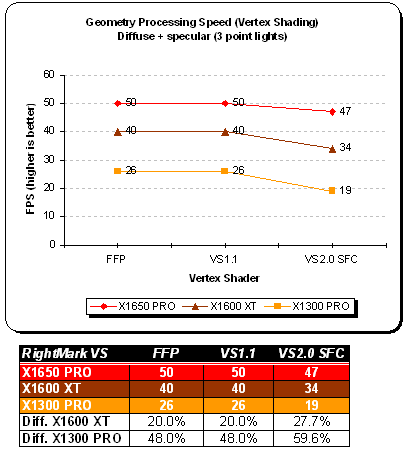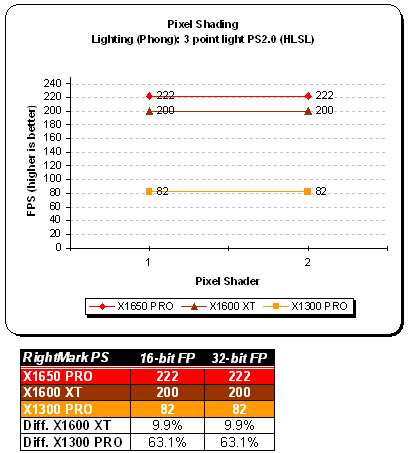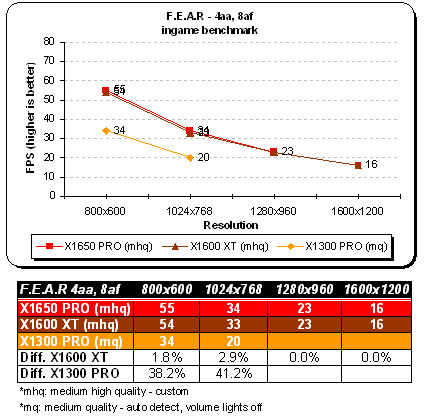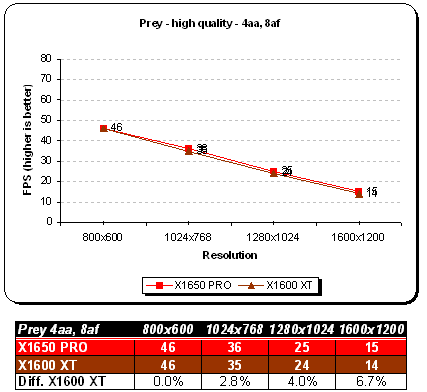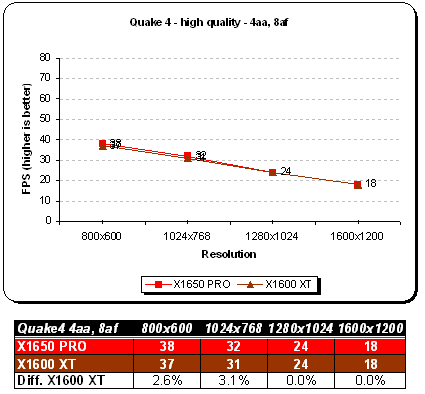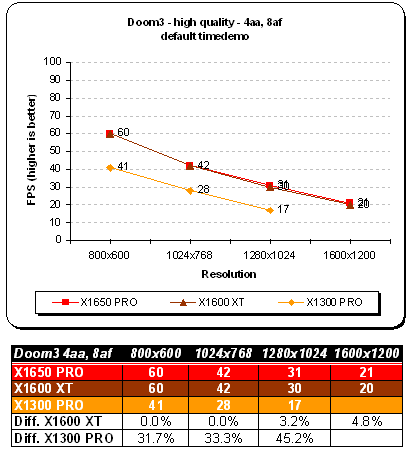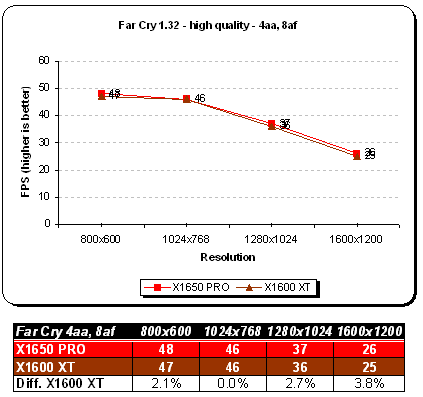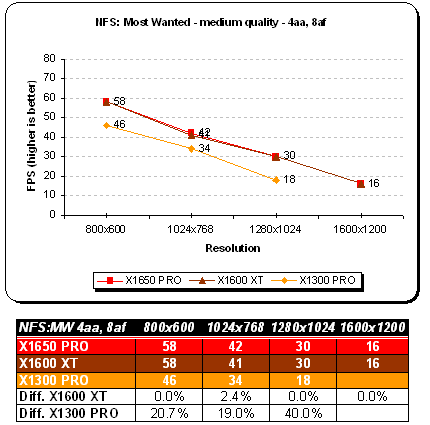RADEON X1600 XT in different pants? That’s right. One of the things that may lead you to buy this card is the retail price of $99 green — supposedly. Pretty sekzy if you ask considering the price of X1600 XT holds tight at $110-140 depending on the vendor. If all goes well, you should be able to pick one of those boards in mid September.
Introduction
Back in January this year I’ve reviewed X1600 XT and X1300 from PowerColor. We now have end of August and some of you’ve been curiously waiting for new middle class cards to come out of ATI. I don’t usually start off reviews from disappointments, but in this case it will be just that. You have to realize, RADEONs X1650 and X1300 XT are also known as RADEON X1600 XT and X1600 PRO. There are few differences here and there, but for the major portion, it’s old stuff we’ve seen from Q1.
The card I have today is a PowerColor X1650 PRO. It’s not a high-end product, more like a middle class GPU with newer / lower price tag. Just as X1600 XT it’s got the same pipeline configuration, 10 MHz higher core clock / memory and is manufactured using 80 nanometer process. No GDDR4 that we’ve seen on X1950 although it’s technically possible. This RV535 uses 128-bit GDDR3 modules and supports the same technology back from Q1 2006. I will reveal more details as you read this article.
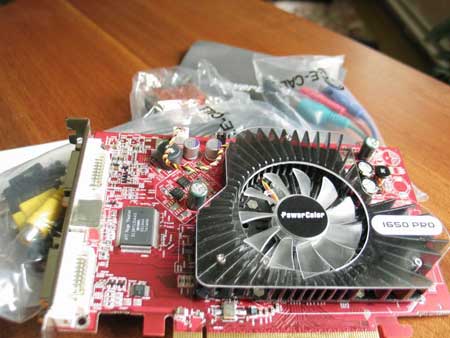
Should you require more detailed information on X1K please revisit our article: The X1000 series – ATI goes SM3.0
PowerColor is a consumer brand focused on providing cutting-edge graphics card products to retail customers. Our goal for the Tul brand is to be the industry’s number one provider of technology product solutions. Our goal for the PowerColor brand is to be the world’s number one brand of graphics cards. PowerColor is in effect owned by Tul Corporation, however the brands are operated independently of each other.
VPU Specifications
As with every new generation of GPUs the feature set becomes larger and more complex. The newly introduced X1K family of products is exactly what we have here. Most importantly, the X1000 line now sports Shader Model 3.0 which has been available from NVIDIA for over a year now. The X1600 GPU is similarly designed as X1800, but with few important differences. It uses 128-bit memory bus and features different pipeline architecture. The card boasts 4 pipelines (known as ROPs, Render Output Pipelines). Do not get confused (as I did), I’ll explain.
ROPs are actual pixel pipelines. Shader pipelines or pixel shaders consist of ROPs and fragment pipelines. With X1600 / X1650, each ROP consists of 3 pixel shaders (giving us 12 PS units) and 8 Z-samples per clock. In other words X1600’s / X1650’s pipeline configuration is as follows:
- 12 PS units
- 4 ROPs
- 4 TMUs (1 TMU per pipeline)
- 8 Z-samples per clock
The biggest of all changes is the introduction of what ATi calls Ultra-Threading Dispatch Processor and Ring Bus (old SMARTSHADER). Without going into much detail here, the dispatch processor (as the name implies) routes or relegates the workload to four pixel shader cores (also known as Quads). Each quad consists of four mini-pixel processors. The process between them is called threading and means:
- Large Scale Multi-threading
- Hundreds of simultaneous threads across multiple cores
- Each thread can perform up to 6 different shader instructions on 4 pixels per clock cycle
- Small Thread sizes
- 16 pixels per thread in Radeon X1800
- Fine-grain parallelism
- Fast Branch Execution
- Dedicated units handle flow control with no ALU overhead
- Large Multi-Ported Register arrays
- Enables fast thread switching
Now the Ring Bus technology. This isn’t Marry-go-around or anything like that — well sort of. The bus itself consists of two 128-bit rings which run in the opposite direction. This way routing latencies are reduced to a bare minimum and clockrate scaling is far more efficient. Among other things we have:
- New cache design – fully associative for more optimal performance
- Improved Hyper-Z – better compression and hidden surface removal
- Programmable arbitration logic – maximizes memory efficiency and can be upgraded via software
| Video card |
PowerColor X1650 PRO | PowerColor X1600 XT | PowerColor X1300 |
| GPU (256-bit) | RV535 | RV530 | RV515 |
| Chip Architecture | .08µ (TSMC fab) | .09µ (TSMC fab) | .09µ (TSMC fab) |
| Transistors | ~157 Million | ~157 Million | ~100 Million |
| Memory Architecture | 128-bit | 128-bit | 128-bit |
| Frame Buffer Size | 256 MB GDDR-3 | 256 MB GDDR-3 | 256 MB GDDR-3 |
| Pipeline architecture1 |
4:12:4:5 | 4:12:4:5 | 4:4:4:2 |
| TMU(s) per Pipeline | 1 | 1 | 1 |
| Engine | Ultra-threaded | Ultra-threaded | Ultra-threaded |
| Bus Type | PCI-e 16x | PCI-e 16x | PCI-e 16x |
| Core Clock | 600 MHz |
590 MHz | 600 MHz |
| Memory Clock | 1400 MHz |
1380 MHz DDR | 800 MHz DDR |
| RAMDACs | 2x 400 MHz DACs | 2x 400 MHz DACs | 2x 400 MHz DACs |
| Memory Bandwidth | 22.4 GB / sec | 22.1 GB / sec | 12.8 GB / sec |
| Pixel Fillrate | 2.4 GPixels / sec |
2.36 GPixels / sec | 2.4 GPixels / sec |
| Texel Fillrate | 2.4 GPixels / sec |
2.36 GTexels / sec | 2.4 GTexels / sec |
| DirectX Version | 9.0c | 9.0c | 9.0c |
| Pixel Shader | 3.0 | 3.0 | 3.0 |
| Vertex Shader | 3.0 | 3.0 | 3.0 |
Radeon® X1650 Graphics Technology – GPU Specifications
Features
-
- Dual-link DVI
- Twelve pixel shader processors
- Five vertex shader processors
- 128-bit 4-channel DDR/DDR2/GDDR3 memory interface
- Native PCI Express x16 bus interface
- AGP 8x configurations also supported with AGP-PCI-E external bridge chip
- Dynamic Voltage Control
- Ring Bus Memory Controller
-
- 256-bit internal ring bus for memory reads
- Programmable intelligent arbitration logic
- Fully associative texture, color, and Z/stencil cache designs
- Hierarchical Z-buffer with Early Z test
- Lossless Z Compression (up to 48:1)
- Fast Z-Buffer Clear
- Z/stencil cache optimized for real-time shadow rendering
- Ultra-Threaded Shader Engine
-
- Support for Microsoft® DirectX® 9.0 Shader Model 3.0 programmable vertex and pixel shaders in hardware
- Full speed 128-bit floating point processing for all shader operations
- Up to 128 simultaneous pixel threads
- Dedicated branch execution units for high performance dynamic branching and flow control
- Dedicated texture address units for improved efficiency
- 3Dc+ texture compression
- High quality 4:1 compression for normal maps and two-channel data formats
- High quality 2:1 compression for luminance maps and single-channel data formats
- Multiple Render Target (MRT) support
- Render to vertex buffer support
- Complete feature set also supported in OpenGL® 2.0
- Advanced Image Quality Features
-
- 64-bit floating point HDR rendering supported throughout the pipeline
- Includes support for blending and multi-sample anti-aliasing
- 32-bit integer HDR (10:10:10:2) format supported throughout the pipeline
- Includes support for blending and multi-sample anti-aliasing
- 2x/4x/6x Anti-Aliasing modes
- Multi-sample algorithm with gamma correction, programmable sparse sample patterns, and centroid sampling
- New Adaptive Anti-Aliasing feature with Performance and Quality modes
- Temporal Anti-Aliasing mode
- Lossless Color Compression (up to 6:1) at all resolutions, including widescreen HDTV resolutions
- 2x/4x/8x/16x Anisotropic Filtering modes
- Up to 128-tap texture filtering
- Adaptive algorithm with Performance and Quality options
- High resolution texture support (up to 4k x 4k)
- 64-bit floating point HDR rendering supported throughout the pipeline
- Avivo™ Video and Display Platform
-
- High performance programmable video processor
- Accelerated MPEG-2, MPEG-4, DivX, WMV9, VC-1, and H.264 decoding and transcoding
- DXVA support
- De-blocking and noise reduction filtering
- Motion compensation, IDCT, DCT and color space conversion
- Vector adaptive per-pixel de-interlacing
- 3:2 pulldown (frame rate conversion)
- Seamless integration of pixel shaders with video in real time
- HDR tone mapping acceleration
- Maps any input format to 10 bit per channel output
- Flexible display support
- DVI 1.0 compliant / HDMI interoperable and HDCP ready**
- Dual integrated 10 bit per channel 400 MHz DACs
- 16 bit per channel floating point HDR and 10 bit per channel DVI output
- Programmable piecewise linear gamma correction, color correction, and color space conversion (10 bits per color)
- Complete, independent color controls and video overlays for each display
- High quality pre- and post-scaling engines, with underscan support for all outputs
- Content-adaptive de-flicker filtering for interlaced displays
- Xilleon™ TV encoder for high quality analog output
- YPrPb component output for direct drive of HDTV displays
- Spatial/temporal dithering enables 10-bit color quality on 8-bit and 6-bit displays
- Fast, glitch-free mode switching
- VGA mode support on all outputs
- Drive two displays simultaneously with independent resolutions and refresh rates
- Compatible with ATI TV/Video encoder products, including Theater 550
- High performance programmable video processor
** ATI’s Radeon® X and Radeon® 9550 series of GPUs are capable of processing HDCP signals (“HDCP ready”), however ATI does not presently manufacture any graphics cards which are HDCP ready. Some third parties manufacture graphics cards containing ATI GPUs — you can inquire of them which models, if any, — are HDCP ready.
- CrossFire™
-
- Multi-GPU technology
- Four modes of operation:
- Alternate Frame Rendering (maximum performance)
- Supertiling (optimal load-balancing)
- Scissor (compatibility)
- Super AA 8x/10x/12x/14x (maximum image quality)
Windows® Logo Program compliant
The Card
PowerColor utilizes ATI reference design cooling system for all their cards. As with X1600 XT, there are no external power inputs — everything is powered from PCI-Express bus. One big difference is addition of ATI Rage Theatre chip with VIVO functionality.
Click a picture to see a larger view
Focusing on the top image reveals the size of X1650 PRO. The die is covered by a reference ATI HSF with PowerColor sticker. Notice it’s a tad different than the one found on X1600 XT. Again there is no external power socket so you don’t have to worry about additional energy being fed to the GPU. Size wise the PCB is similar to that of RADEON X800. The cooling device is held in place by 4 screws, no back plate here. Our test sample exhibits dual DVI-I outputs as well as S-Video out. The card carries standard display support: VGA compatible, VESA compatible BIOS for SVGA and DDC 1/2b/2b+
As far as memory is concerned this board carries the same GDDR3 chips as its older X1600 XT SKU: Infineon HYB18H512321AF-14 (TFBGA-136 rated at 700 MHz).
Bundle
The front and back of the box highlight cards specifications and features. In the middle of the box you are presented with a hot angel chick. The back of the box sports specs. The sides show system requirements. Additionally you’ll find major features being listed in 6 different languages.
Click a picture to see a larger view
- Driver CD
- CyberLink DVD Solutions
- PowerDVD 5
- PowerProducer 2 Gold DVD
- PowerDirector 3
- Power2Go 3
- Medi@show 2
- Quick installation guide
As for accessories, here it is:
- S-Video Cable
- Composite Cable
- 1 DVI-I connector (? I assume there should be 2)
- S-Video to AV connector
Setup and Installation
All of our benchmarks were ran on Athlon64 3000+ clocked at 2.5GHz. I will stack PowerColor X1600 XT and X1300 against each other. I’ll be comparing this X1650 PRO to X1600 XT and X1300. Overclocking section will consist of 3DMark05 scores from different cards. The table below shows test system configuration as well benchmarks used throughout this comparison.
| Components | – DFI NF4 Ultra-D – Athlon64 3000+ Venice – G.Skill F1-4000BIU2-2GBHV DDR500 – Thermaltake 550 Watt PSU – PowerColor X1650 PRO – PowerColor X1600 XT – PowerColor X1300 |
| Software | – Windows XP SP2 – DirectX 9.0c – nForce4 6.86 drivers – CATALYST 6.7 |
| Synthetic Benchmarks | – 3DMark 2005 v1.2.0 – 3DMark 2006 – D3D Right Mark 1.0.5.0 beta 4 |
| Gaming Benchmarks | – F.E.A.R / ingame benchmark + Fraps – Half-Life 2 / custom d13c17 timedemo + Fraps – Doom 3 / default timedemo + Fraps – Quake 4 / custom timedemo – NFS: Most Wanted / Fraps – Far Cry 1.32 / custom timedemo + Fraps |
| Notes | CPU clocked at 2.5GHz |
Important CATALYST notes:
For X1600 XT
CATALYST A.I: standard
Mipmap detail level: quality
For X1300 PRO
CATALYST A.I: advanced
Mipmap detail level: quality
As far as installation goes I cannot report any problems. The card booted without any problems, however included drivers were CATALYST 6.7, but I’m told retail package contains WHQL 6.8.
Synthetic Benchmarks
I’ve used Futuremark’s 3DMark 2005 to measure the actual throughput of PowerColor X1650 PRO and compared it against X1600 XT, X1300 and X700. Additionally I’m including scores from Futuremark’s newest 3DMark06.

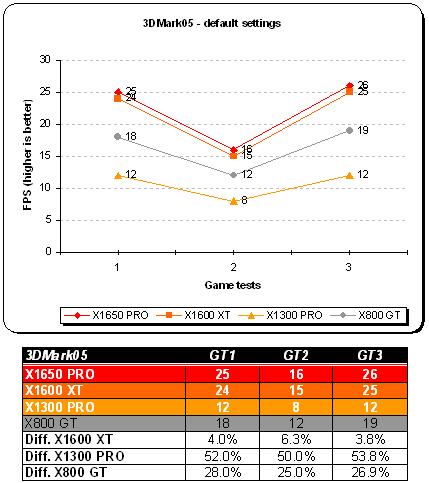
RightMark
D3D RightMark is a very useful tool for measuring different theoretical throughputs of a graphics chip. I ran couple of synthetic tests to stress out X1650 PRO. The main focus of theses tests will be to stress out Geometric Processing (Vertex Shading) as well as Pixel Shader units.With D3D RightMark you will be able to get the following information about your video card:
- Features supported by your video card
- Pixel Fillrate and Texel Fillrate
- Pixel shader processing speed (all shader models)
- Vertex shader (geometry) processing speed (all shader models)
- Point sprites drawing speed
- HSR efficency
The difference between the two tested cards is pretty substantial. RADEON X1600 is aimed at the middle-end market while the X1300 is pushed through the low-end channel. PowerColor X1600 XT performs better by around 35-41%. Let’s see how those cards deal with pixel shading tests.
F.E.A.R
On August 5th this year, VUGames have released F.E.A.R demo to the public. The game is being made over at Monolith Productions studio and should be out later this year. Since almost everyone has been waiting for this demo, I’ve decided to give it a shot and bench it with X1600 XT and X1300 from PowerColor.
Texture caching in retail F.E.A.R has been improved a little. You won’t see a lot of chugging when abruptly turning around. Our benchmarking method was simple. I used default F.E.A.R benchmarking utility which nicely shows all effects and technology used throughout the game.
Game Overview
An unidentified paramilitary force infiltrates a multi-billion dollar aerospace compound, taking hostages but issuing no demands. The government responds by sending in special forces, but loses contact as an eerie signal interrupts radio communications. When the interference subsides moments later, the team has been obliterated. As part of a classified strike team created to deal with threats no one else can handle, your mission is simple: Eliminate the intruders at any cost. Determine the origin of the signal. And contain the crisis before it spirals out of control.
As you probably know, F.E.A.R uses a very sophisticated game engine (FEAR).
- Rendering
- FEAR is powered by a new flexible, extensible, and data driven DirectX 9 renderer that uses materials for rendering all visual objects. Each material associates an HLSL shader with artist-editable parameters used for rendering, including texture maps (normal, specular, emissive, etc.), colors, and numeric constants.
- Lightning Model
- FEAR features a unified Blinn-Phong per-pixel lighting model, allowing each light to generate both diffuse and specular lighting consistently across all solid objects in the environment. The lighting pipeline uses the following passes:
- Emissive: The emissive pass allows objects to display a glow effect and establishes the depth buffer to improve performance.
- Lighting: The lighting pass renders each light, first by generating shadows and then by applying the lighting onto any pixels that are visible and not shadowed.
- Translucency: The translucent pass blends all translucent objects into the scene using back to front sorting.
- FEAR features a unified Blinn-Phong per-pixel lighting model, allowing each light to generate both diffuse and specular lighting consistently across all solid objects in the environment. The lighting pipeline uses the following passes:
- Visual Effects
- FEAR features a new optimized, data driven effects system that allows for the creation of key-framed effects that can be comprised of dynamic lights, particle systems, models, and sounds. Examples of the effects that can be created using this system include weapon muzzle flashes, explosions, footsteps, fire, snow, steam, smoke, dust, and debris.
- Sample Lights
- FEAR’s lighting model is very flexible and allows developers to easily add new lights. Existing lights include:
- Point Light: The point light is a single point that emits light equally in all directions.
- Spotlight: Similar to a flashlight, the spotlight projects light within a specified field of view. The spotlight can also use a texture to tint the color of the lighting on a per pixel basis.
- Cube Projector: Similar to the point light, the cube projector uses a cubic texture to tint each lit pixel.
- Directional Light: This lighting is emitted from a rectangular plane and is used to simulate directional lights like sunlight.
- Point Fill: Although similar to the point light, the point fill is an efficient option because it does not utilize specular lighting or cast shadows.
- FEAR’s lighting model is very flexible and allows developers to easily add new lights. Existing lights include:
A more detailed overview of other F.E.A.R technologies can be found over at Touchdown Entertainment. These include: Havok Physics Engine and Modeling / Animations System.

Prey
Prey is a recently released first person shooter developed over at Human Head Studios, the same crew behind great Rune game. It’s produced over at 3D Realms and runs on a modified Doom 3 engine. Prey has its own Wiki so go ahead and read some more about the game
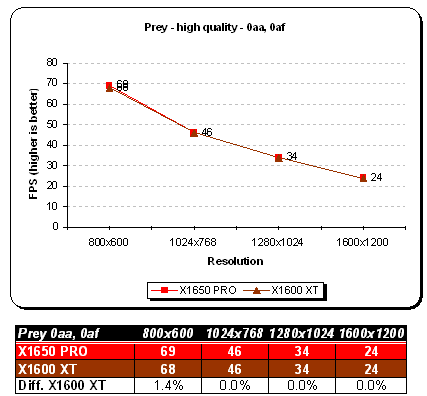
Quake 4
This is another good title worth looking at. With success of Quake 3, id Software decided (after few years) it would be proper to have a sequel. Designed over at Raven Software’s farm, Q4 features rich single player as well as intensive and popular multiplayer mode.
It uses Doom 3 engine so you should be familiar with available effects. In any case, I listed them below
- Unified lightning and shadowing engine
- Dynamic per-pixel lightning
- Stencil shadowing
- Specular lightning
- Realistic bumpmapping
- Dynamic and ambient six-channel audio
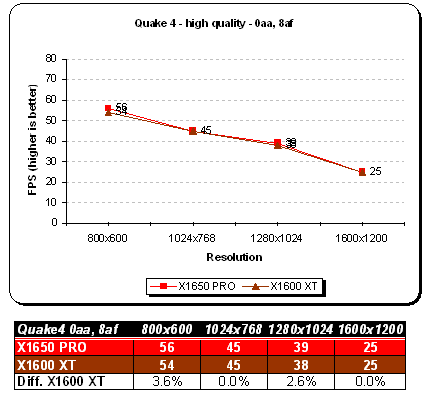
Doom 3
Now that we are past Doom 3s release, some gamers have been left with a bit of disappointment. Main reason is Half-Life 2 and its Source engine which really showed a vast amount of potential and scalability.
Although this game needs no introduction, I will go over some of the game features and technology behind Doom 3. It took the guys at id Software over four years to complete this project. Lead programmer, John Carmack spent an awful lot of time designing the game engine, but his hard work paid off — to some extent since this is first title which houses Doom 3 engine.
Let’s look at some of the engine tech features which are present in Doom 3:
- Unified lightning and shadowing engine
- Dynamic per-pixel lightning
- Stencil shadowing
- Specular lightning
- Realistic bumpmapping
- Dynamic and ambient six-channel audio
However you look at it, Carmack’s lightning engine is the essence of Doom 3. With OpenGL being the primary API, shaders have been put to a heavy use in order to create the realisticly looking environment. Instead of using lightmaps the game engine now processes all shadows in real-time. This technique is called stencil shadowing which can accurately shadow other objects in the scene. There are disadvantage to this method however:
- Requires a lot of fillrate
- Fast CPU is needed for shadow calculations
- Inability to render soft shadows
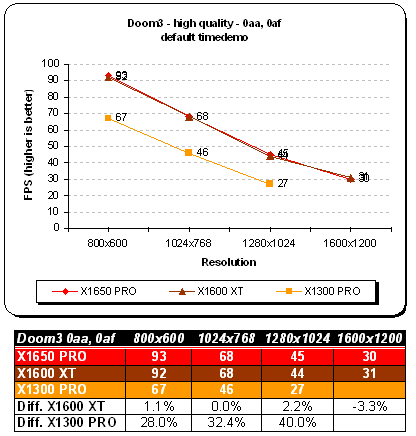
Half-Life 2
We all love Half-Life 2 and we all want best performance out of our hardware. This has to be one of the most graphic demanding games currently on the market. Half-Life 2 is built around Source engine which utilizes a very wide range of DirectX 8 / 9 special effects. Those include:
- Diffuse / specular bump mapping
- Dynamic soft shadows
- Localized / global valumetric fog
- Dynamic refraction
- High Level-of-Detail (LOD)
Note that users with DirectX 7 and older hardware (NVIDIA MX series for example) will not be able to enjoy the above effects. Let’s see how middle-end / low-end X1K graphic cards perform.

Far Cry 1.32
The company behind this game is Crytek. It was pretty much the first title which used a heavy load of PS 2.0 shaders. For our benching purposes we are using the full version with the newest 1.32 patch applied (mainly fixes SM 3.0 issues that caused graphic corruption on newer ATI hardware). Anyone who played this title will admire the draw distance, beautiful outside vegetation and incredibly spooky indoor environment. The game also features topnotch self-learning A.I and very realistic physics.
Far Cry’s CryEngine is pretty scalable, however you’d need at least DirectX 8 class hardware to enjoy the refractive water effects, ripples, real time per-pixel lighting, specular bump-mapping or volumetric effects.
The map of choice was Research. It’s a high-polygon map with both outdoor and indoor environment.
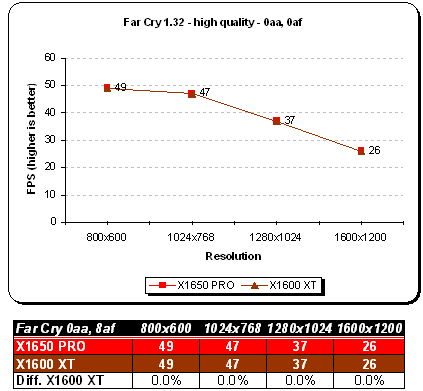
Need For Speed: Most Wanted
We have quite a few sequels in this review and this is another one, this time from Electronic Arts. If you’ve played NFS Hot Pursuit you know what I’m talking about. There are a lot of ideas taken out from the older NFS. The main difference between Most Wanted and Underground (in terms of graphics) is addition of HDR-type effects. It’s pseudo-HDR (more like bloom), but looks lovely nonetheless. Additionally the game sports flashy new reflections, better object geometry, improved lightning system and finally physics engine.
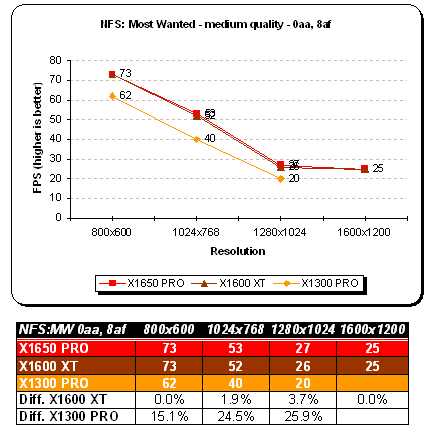
Overclocking & Conclusion
Unfortunetely I was unable to overclock this X1650, no support yet in provided drivers. No support for this card either in CATALYST 6.8 suite. I will do this section whenever possible. I can only assume the GPU overclocks tad higher than X1600 XT due to 80nm fabrication process.
As always, I’m including consolidated 3DMark05 list for your viewing pleasure
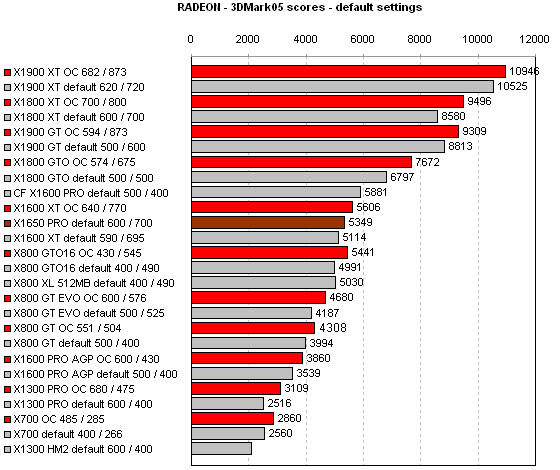
What can be said about PowerColor’s RADEON X1650 PRO? Well first of all, I’m not a fan of refresh products that bring nothing new in terms of performance. As I said on the very first page this product is nothing more than X1600 XT in different pants. ATI has always been a bit behind when it comes to mid range products. Although I haven’t tested it against GeForce 7600 GS it’s clear that the difference between X1600 XT and X1650 PRO is marginal, next to nothing. Performance scales similarly across all modes. RADEON X1650 PRO gains few FPS here and there due to higher core / memory clocks, but overall it performs like the older part. RV535 however brings you ATI Rage Theatre chip which was not available in PowerColor’s line of X1600 XT. Supposedly HDCP ready soon with a driver update.
One of the things that may lead you to buy this card is the retail price of $99 green — supposedly. Pretty sekzy if you ask considering the price of X1600 XT holds tight at $110-140 depending on the vendor. If all goes well, you should be able to pick one of those boards in mid September.
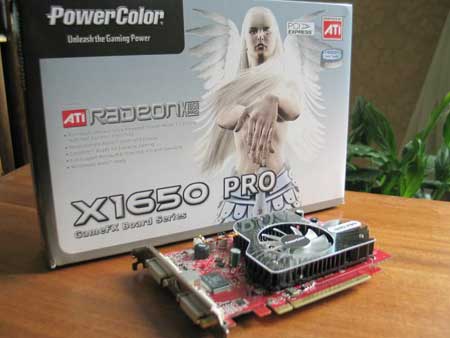
+ Cheap
+ 80nm process = runs cooler
+ Ok performance / price ratio
+ ATI Rage Theatre chip
+ Dual DVI
Cons:
– Really an X1600 XT with different name
– No performance benefits
– Wont overclock out of the box
– CATALYST 6.8 not friendly
For solid performance in its class, PowerColor X1650 PRO get the rating of 8.0 (Very Good) out of 10 and Bjorn3D Seal of Approval
 Bjorn3D.com Bjorn3d.com – Satisfying Your Daily Tech Cravings Since 1996
Bjorn3D.com Bjorn3d.com – Satisfying Your Daily Tech Cravings Since 1996








